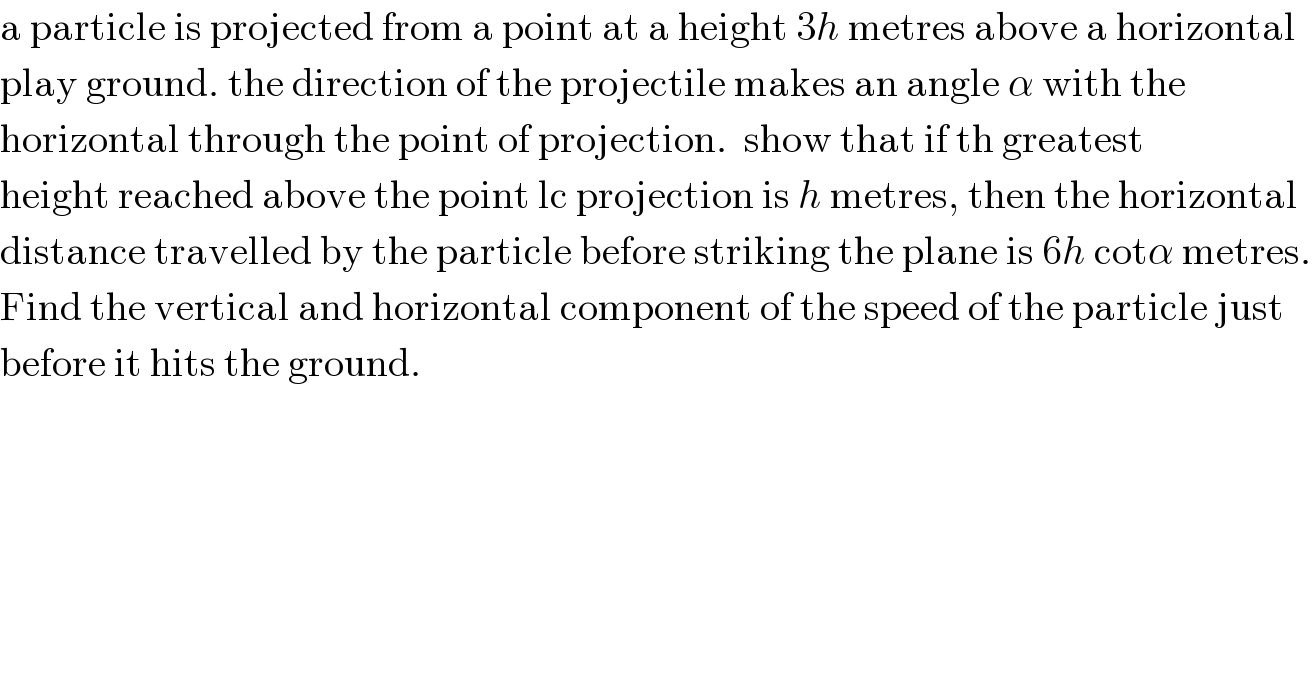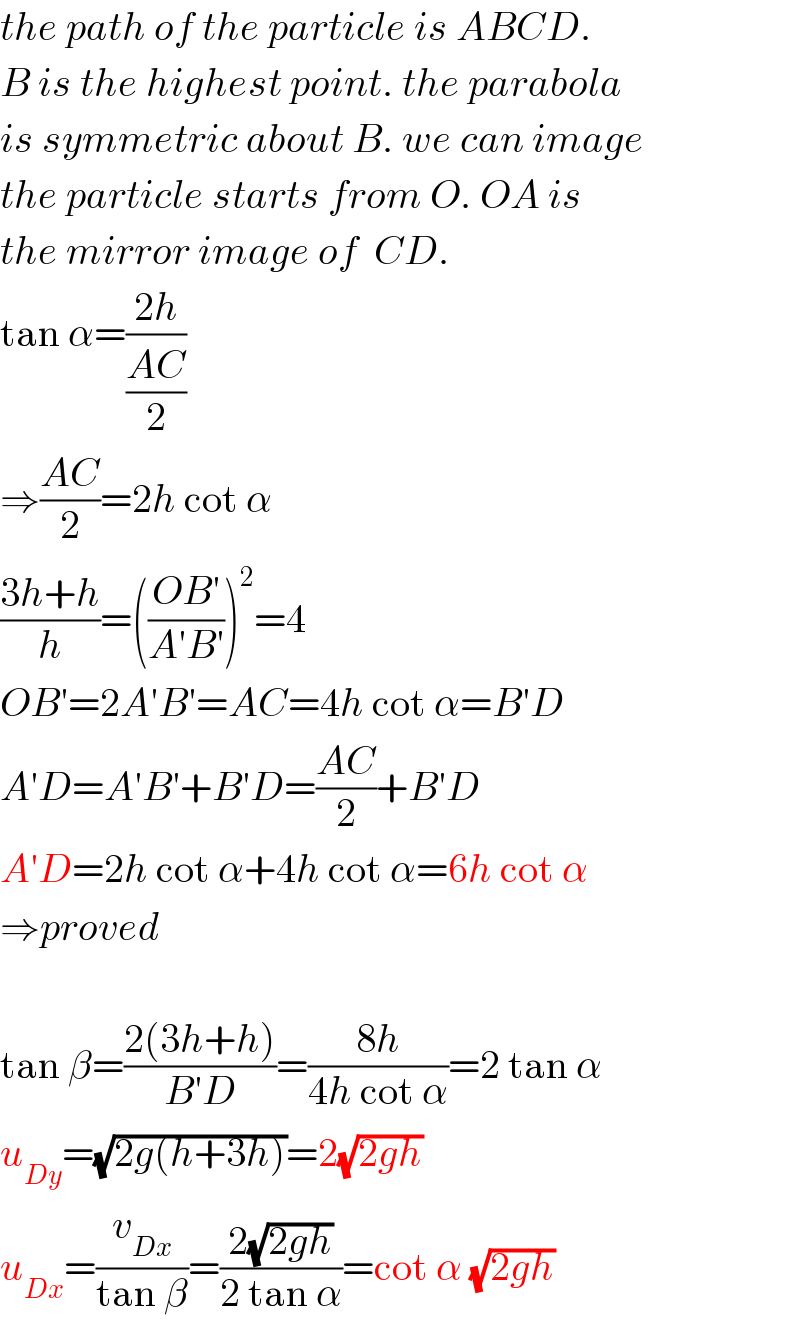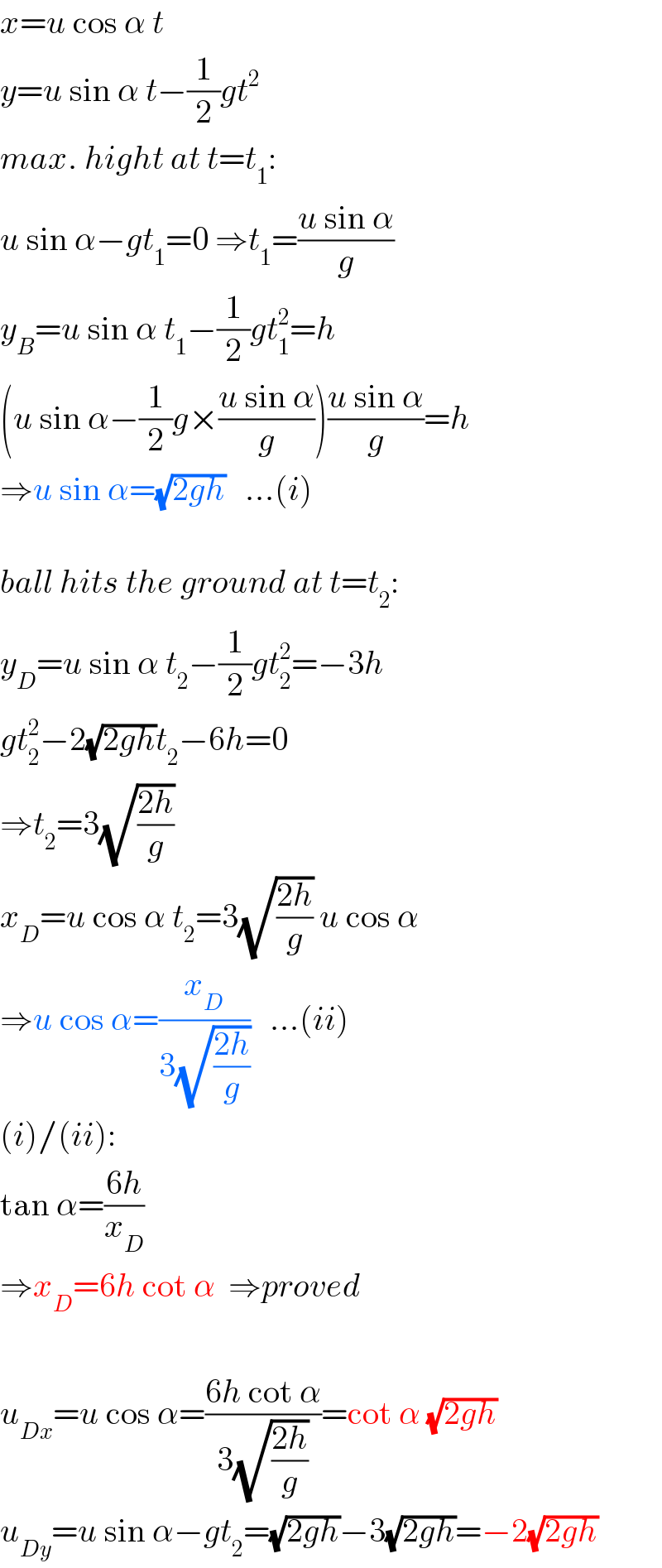
Question and Answers Forum
Question Number 91946 by Rio Michael last updated on 03/May/20

Commented by mr W last updated on 04/May/20

Commented by Rio Michael last updated on 04/May/20

Commented by Rio Michael last updated on 04/May/20

Answered by mr W last updated on 04/May/20

Commented by Rio Michael last updated on 04/May/20

Commented by mr W last updated on 04/May/20

Commented by mr W last updated on 04/May/20

Commented by mr W last updated on 04/May/20

Commented by Rio Michael last updated on 04/May/20

Commented by Tawa11 last updated on 06/Nov/21

Answered by mr W last updated on 04/May/20

Commented by mr W last updated on 04/May/20

Commented by mr W last updated on 04/May/20

Commented by mr W last updated on 04/May/20

Commented by Rio Michael last updated on 04/May/20

